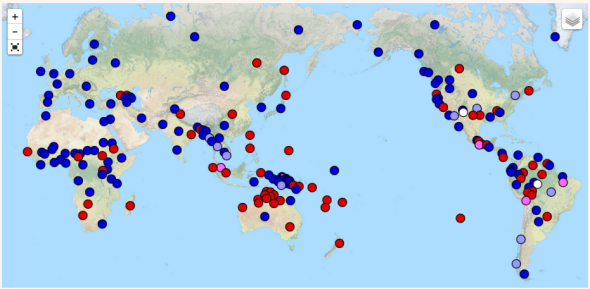If you were redesigning English, and you could make it do anything that any other language in the world does, what would you change? In the video below, YouTuber Tom Scott talks about four fantastic features in other languages that he wishes were found in English.
I’m especially fond of the inclusive and exclusive “we.” That’s a distinction between “We’re going to the movies. Are you ready yet?” and “We’re going to the movies. See you later!”—in other words, between being invited to the party and being a third wheel.
It’s particularly useful when you want to switch back and forth between the two: “I’m writing to you on behalf of my colleagues. We (exclusive) are wondering if you’d be interested in collaborating with us (exclusive). We (inclusive) could accomplish great things together! We (exclusive) hope to hear from you soon about the future of us (inclusive)!”
Since we’re not in the habit of putting inclusive/exclusive parentheticals after every time we say “we,” you probably got confused fairly quickly among all this switching. But if English had distinct words for these two ideas (call ‘em in-we and ex-we for short), this switching would be no more confusing than alternating between “I” and “you.” In this case, we could say something like: “Ex-we are wondering if you’d be interested in collaborating with ex-us. In-we could accomplish great things together! Ex-we hope to hear from you soon about the future of in-us!”
Although inclusive and exclusive “we” are rare in European languages, they’re relatively common around the rest of the world. Here’s a map from the World Atlas of Language Structures, showing which languages make this distinction and which don’t. The dark blue dots represent languages, like English, that have just the one “we,” and the red dots represent languages that have two different pronouns: “in-we” and “ex-we.”

Courtesy of the World Atlas of Language Structures
And that’s not even getting into the idea of a separate word for the third type of “we” in English. But then, unless you’re having tea with the Queen, it’s unlikely to cause much confusion.
Follow @lexiconvalley on Twitter or on Facebook.
